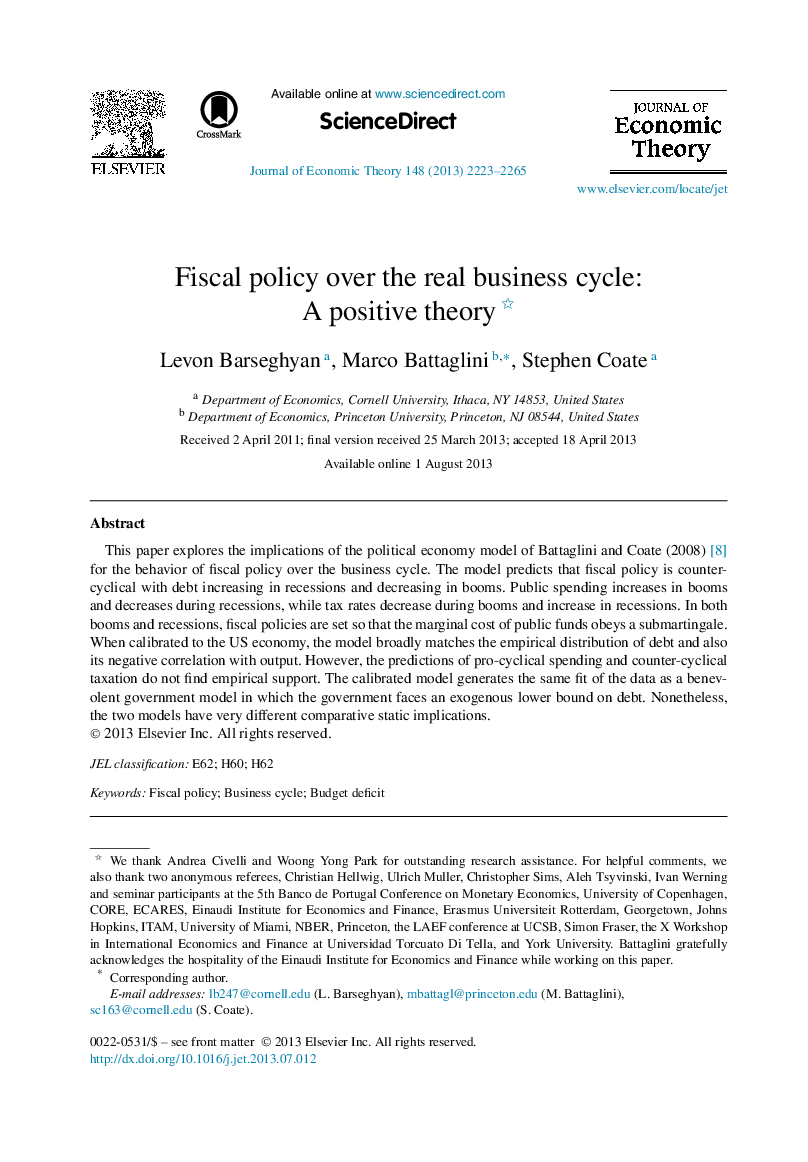| Article ID | Journal | Published Year | Pages | File Type |
|---|---|---|---|---|
| 956724 | Journal of Economic Theory | 2013 | 43 Pages |
Abstract
This paper explores the implications of the political economy model of Battaglini and Coate (2008) [8] for the behavior of fiscal policy over the business cycle. The model predicts that fiscal policy is counter-cyclical with debt increasing in recessions and decreasing in booms. Public spending increases in booms and decreases during recessions, while tax rates decrease during booms and increase in recessions. In both booms and recessions, fiscal policies are set so that the marginal cost of public funds obeys a submartingale. When calibrated to the US economy, the model broadly matches the empirical distribution of debt and also its negative correlation with output. However, the predictions of pro-cyclical spending and counter-cyclical taxation do not find empirical support. The calibrated model generates the same fit of the data as a benevolent government model in which the government faces an exogenous lower bound on debt. Nonetheless, the two models have very different comparative static implications.
Related Topics
Social Sciences and Humanities
Economics, Econometrics and Finance
Economics and Econometrics
Authors
Levon Barseghyan, Marco Battaglini, Stephen Coate,
